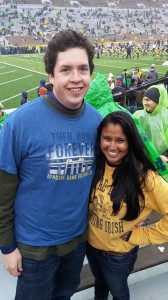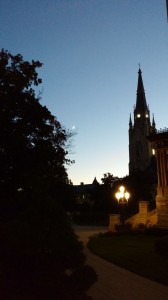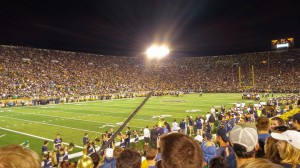A post from our student blogger Catie
Recently, a U.S. patent was presented as evidence online to support a theory that the U.S. government created the Ebola virus. Considering it was a patent, I had to check it out for myself! If you google ‘google patents’, it will take you to a patent database provided by Google where you can perform your own patent search on any subject you can imagine. You can also see the ‘Ebola patent’ by googling US20120251502 A1 or searching ‘Ebola virus’ in Google patents.
After taking a quick look at the patent, I noticed a few problems with it. Firstly, this is not a granted patent. If you look at the gray box at the top of the screen, you will see that under ‘Publication Type’, it is listed as ‘Application’. This means that this is simply a published patent application, which is what happens to all patent applications that are submitted to the USPTO. For reference, do a Google patent search of patent 5,000,000. This is a patented invention, and under ‘Publication Type’, it says ‘Granted’. Next, do a Google patent search of ‘godly powers’. This is a completely ludicrous patent application, but it is indeed still published. This goes to show that the Ebola virus has not been patented, and its publication status does not necessarily speak to its legitimacy.
As I continued to go through the patent, it raised some red flags for me that all descriptions of the invention and even the claimset claims ‘an isolated human Ebola virus’. Natural phenomena are not patentable! An invention must be a new, useful object or method that was created by humans for the benefit of others and must be capable of being reproduced by a person skilled in the art of the invention. On public PAIR, which is another patent database, I looked at the office actions that have been sent regarding this patent up to the present day, and it actually was rejected on a 35 U.S.C. section 112 violation. This means that the examiner did not find the application to describe the invention in clear enough terms for it to be reproduced or utilized by the public.
I was incredibly surprised to find that the application did not also have a 35 U.S.C. section 101 violation in that ‘an isolated virus’ does not meet the criteria for a useful invention. However, in the discussions of this patent application on Google patents, it was pointed out that the isolated virus in which they are claiming is some sort of weakened version of the virus that was likely isolated for research purposes. If that is the case, then the ‘patentable subject matter’ issue may be slightly less of a problem. Nonetheless, we have been learning that in patent application drafting, it is best to be upfront about why the invention at hand is new and useful so that it may be absolutely clear to anyone who reads it that it is indeed deserving of a patent! This patent application simply describes the physical characteristics of the isolated human Ebola virus, with no description of how to synthesize or use it! Based on the other office actions that have been made in the case of this patent application, I think the inventors still have a long road ahead of them before they can hope to have the patent granted. So no worries, everyone: no one yet owns the exclusive rights to Ebola!


